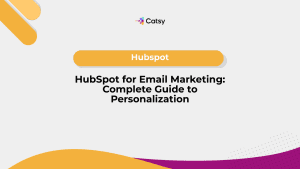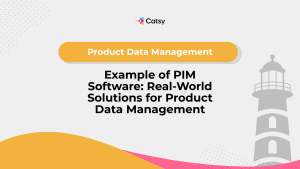6 Updates You Can Make to Your eCommerce PDPs Right Now

In this Article
The structure of a high-quality eCommerce PDPs
Before we get a grasp on how to drive engagement on a product details page, it is critical to understand the basic outline and structure of a good eCommerce PDPs.
An extensive amount of research and experimentation is conducted with the outline, structure, and information found on a product details page because this is considered the entry point of every online sale. All online potential customers on a particular eCommerce site will be shown the same exact product details page when they search for the product. It creates the first impression, and the impact that this page creates can immediately seal the deal for a sale.
For this reason, understanding the outline and the basic ingredients of an impactful eCommerce PDPs gives us a basic idea of what we have to work with, after which sales, marketing, and design teams can coordinate with each other to design a page that represents the product in the best setting possible. The design and creativity found on a product details page do not only reflect the quality and the credibility of the product but of the organization and the brand as well.
As the name suggests, a product details page consists of product information about the product attributes, features, functions, digital assets that portray the product in different angles, contexts, and scenarios, and interactive action buttons that allow the prospective customer to proceed down the sales pipeline.
Here are some of the essential parts of a good product details page:
- Product Description
- Pricing
- Delivery options
- Stock keeping or inventory information
- Return and replacement policy
- Warranty and protection plans
- Product information
- Feedback and reviews
- Suggested products
- Digital assets
- Call to action buttons

Product Description
This section includes product information concerning the various attributes and features of the product such as the title, size, color, brand, functions, key features, and compatible devices.
If we’re looking at a sofa, a brief product description would look like this: pullout couch grey l-shaped sofa, manufactured by ‘relax sofas’, capable of seating 6, comes with extra storage space, modern sleeper style with arm saddles, and most suitable to be placed in the living room.
Product descriptions are meant to be short but packed with enough detail to guarantee the authenticity and quality of the product.
Pricing
Here, the viewer is presented with information about the price of the product and the price of a ‘used’ version of the product. Payment plan details are also included in this section if the seller offers this option. For some products such as books, online and e-book versions are available for cheaper prices.
If the prices have dropped, the previous price can be mentioned along with the amount that the viewer would save if they went ahead with purchasing the product.
Delivery options
Contains information regarding the price of delivery based on delivery dates, dates during which the delivery of the product should be expected, where the shipment originates from, and where the product will be shipped to (address of the buyer).
Stock keeping or inventory information
Specifies whether the product is currently in stock or not. If the product is not in stock, an approximate date by which the product is expected to be back in stock is specified or an external resource such as a link to the manufacturer’s brand portal may be suggested.
Return and replacement policy
This section includes conditions or clauses upon which a replacement or a return is applicable. A period of time within which return, refund, or replacement is also specified.
Warranty and protection plans
Information about protection plans at different rates and warranty conditions can be mentioned here.
Product information
Additional features of the product such as exact product dimensions, the weight of the product, manufacturer, a standard identification number or a unique identification number, stock keeping unit information, model number, country of manufacture or origin, and the date the product was first available. Product Information Management (PIM)Speed to Market with Catsy! Book a Demo
Feedback and Customer reviews
Product reviews, ratings, and feedback from current users of the product can be found in this section. Positive product reviews are very important because they confirm the legitimacy of a product. Good product review structure includes many components: 1-5 star ratings, title, and question prompts such as “what did you like most about the product?”
Images with captions can be added to attest to the quality and the experience of using the product. Getting feedback and product reviews can be like pulling teeth, so offer an incentive such as a 10% off coupon to encourage customers to provide valuable feedback.
Suggested single products
Single-product eCommerce PDPs offer the opportunity to introduce related, alternate, and frequently purchased together products. Often located toward the end of the page, this section includes thumbnails and links to products that have similar attributes, features, and functions. Single products that are often bought with the one currently in view, can also be suggested in this section.
Digital assets
This is probably the most important section on a product details page because the viewer has a chance to see and engage with the product to a certain degree. Digital assets such as primary photos, secondary photos, thumbnail images, three sixty-degree spin photos, videos, and lifestyle images are included in this section.
Call to action buttons
Another essential part of the product details page, buttons such as ‘add to cart, ‘add to wish list’, ‘buy now, and ‘remind me later’ are options that the viewer has to move forward with the purchase of the product or can move one step towards by adding it the wish list or the cart button. There is a substantial amount of research that goes into designing these ‘call-to-action buttons, with great attention given to their size, color, and location on the product details page.

Enhance eCommerce PDPs further with Digital Assets
When searching for most products in an online catalog, viewers first tend to look for images and visual data about the product. While searching for a product such as a sofa, viewers want to know how the sofa would look in their house or environment if they bought it.
Using this information, it is safe to assume that the various types of digital assets and their quality is a key driver of engagement on product details pages.
Having said that, let’s dive right into the various types of digital assets, and how we can use each of them to drive engagement and improve sales:
- Thumbnails
- Primary images
- Secondary images
- Three sixty-degree spin photos
- Zoom-in images
- Lifestyle images
- Product Videos
Thumbnails
When you search for a specific type of product (let’s go back to our sofa example) on a brand portal or an eCommerce catalog, you get a list of products along with small images or thumbnails next to the title of the product. Despite the size of these images, conveying detail along with the right amount of space to ensure that the image is not crowded is an important aspect of capturing the viewers’ attention.
For example, a good thumbnail of a sofa would include the entire sofa set along with a plain colored background that highlights the sofa. Simplicity and clarity are key elements in thumbnail images. Utilizing a solid grey or white background can help product images stand out. Catalogs can also incorporate features that enlarge the thumbnail image when the viewer hovers over the image with their cursor. This allows the viewer to view other digital assets of the product without having to wait for the product to load on a new page after they select it.
Primary product images
Product photos presented to the viewer upon clicking on a product from the products list page is known as the primary image. Once the viewer selects a product (presumably based on the thumbnail or the title), they expect to see a larger and more elaborate image of the product. The primary image is that larger, more elaborate, and more detailed representation of the product.
This image contains the entire product in a single frame from an angle that almost always faces forward. Any extra parts or accessories that come with the product are included within the frame of the primary image. For example, if a sofa comes with five cushions, a creative picture of the sofa along will all the cushions make up the primary image. Creative and attractive primary images add to the quality of the first impression and provide clarity to the viewer’s visualization of the product in their lives.
Secondary product images
In addition to primary images, secondary images can be added to a gallery of digital assets, which display the product from different angles. In the case of the sofa, secondary images could include shots such as a bird’s eye view of the sofa, a view from the back, and a view from the side of the sofa.
For more sophisticated and complex products, additional views, such as internal and external views can be added as secondary images. If the sofa comes with various add-ons such as lamps, tables, or leg rests, secondary images can show the sofa with and without these accessories. The purpose of these images is to provide additional perspectives and contexts to the product in the eyes of the viewer.
Three sixty-degree spin photos
So far, we have only spoken about stationary images of the product. While these images provide some information about the product, three-sixty spin images may be one of the most interactive digital assets so far. In these types of images, viewers can visually ‘rotate’ the image of the product with their cursor to get a view of all angles of the object.
This is a type of digital asset that allows the viewer to engage with it by rotating the image to an angle of their choice. The three-sixty-degree spin feature can also be added to the primary image, so the viewer can spin the primary image around to angles of their choice.
Additionally, in some scenarios such as the sofa, viewing the product from all angles with the simple movement of a cursor is a feature that only exists in online shopping, as this rotation is not possible in-person. By using such features, we can identify a few areas, where online shopping can have a slight advantage over offline shopping.
Zoom-in images
Similar to three sixty spin photos, zoom-in images allow for some type of engagement as they allow the user to zoom into an image by clicking on it and hovering over the image (as if they were looking at the product through a magnifying glass).
This feature allows viewers to get a close-up of the product and all parts of the product covered in the image. In the case of the sofa, viewers may want to get a close-up of the type of stand of the sofa, smaller accessories, parts such as casters, or the visible texture of the sofa’s fabric.
This zoom-in feature can be added to secondary images, as well as thumbnails. In more sophisticated scenarios, we can have images with both the three sixty-degree spin features and the zoom-in feature, so viewers can rotate and zoom into and out of images at the same time. Getting creative with these features drives engagement, as it comes close to the experience of viewing the product in person.Digital Asset Management (DAM)Speed to Market with Catsy! Book a Demo
Lifestyle images
Although these are stationary images, lifestyle images display the product being used by a person in a setting or context the product was created for. Using the sofa as an example, an image of a family watching a movie on the sofa in their living room, a visual of the sofa being used by corporate employees during their break period, and an image of a college student sleeping on the sofa in its ‘bed’ form are all example of lifestyle images.
These images bring in the element of relevance. At the end of the day, every prospective client is searching for the right product that will serve its purpose with efficacy. The image of the product in action, serving its purpose well in another individual’s environment increases its credibility and use-ability.
Product Videos
This type of digital asset can cover multiple aspects of product information within the same file, as the user is presented with a product demo, a marketing video (or an advertisement), or a video describing the various features and functions of a product. Videos drive engagement, as they serve as a source of information and multiple digital assets within a single view of the file.
Instead of having to read through a descriptive list of product information and details, a user can watch a video that covers these details in one to two minutes. More information covered in a shorter time span has a better chance of holding the attention of the user, thereby increasing the chances of a purchase.

6 updates you can make to eCommerce PDPs right now
Now that we have looked at how each type of digital asset can drive engagement on product details pages, we can consider optimizing other aspects of the product information such as organizing the title and the description of the product, listing all pricing options, leveraging social proof to improve confidence (such as reviews and feedback), increasing accessibility to customer service or assistance, increasing the prominence of call-to-action buttons, and improving product options (suggestions).
- Product title and details
- Listing all pricing options
- Increasing accessibility to customer assistance through chat-bots
- Increasing the prominence of call-to-action buttons
- Improving product suggestions

1. Product title and details
A strong title that highlights the most attractive features of a product can make or break a sale. Titles are generally known to be short and concise, but effective products on an eCommerce catalog are generally known to have longer titles, as they are somewhat considered as a summary of the product description.
If a particular sofa is most well-known for its convertible ability and its wine-colored matte finish, its product title would look like this: “Convertible wine-colored sofa with matte finish – seats 6.” Titles as such convey the information in a straightforward and concise manner while highlighting the most sought-after features of the product.
Identifying these features allows brands to come up with creative and concise titles to capture the attention of viewers. The details section, on the other hand, contains all the information regarding the features and functions of the product (refer above to the ‘essential parts of a good product details page for the contents of product decryption.
A potential customer generally has a few options at hand, amongst which they make a final decision. Organizing product details of multiple similar products to come up with a table of comparison is a great tool to drive engagement, as it serves as an easy resource that users can use to compare their choices.
In the example concerning the sofa, multiple sofas can be compared on tables, where their dimensions, seating capacity, material or fabric, convertibility, storage capacity, and other features are compared to other product options.

2. Listing all pricing options
When it comes to pricing, viewers desire clarity and dislike surprises. The last thing a viewer wants to experience is paying more than what was listed as the initial price.
Listing all prices clearly (in bold or highlighted text) is key to keeping the attention of the viewer as it provides clarity and sustains their confidence in the product and the brand. Listing payment plan options, discounted rates, previous prices, and delivery prices are essential to increase the chances of purchase via product listings.

3. Leveraging social proof
In the eyes of the viewer, great reviews and feedback from similar individuals serve as a huge confidence and credibility booster. While your brand may be doing an excellent job of promoting the product, solid reviews from other customers who are currently using the product assure the viewer that they will get exactly what they need from the product.
Although the reviews and feedback are placed towards the end of the product details page, including a few details such as the number of reviews and the number of five-star reviews near the product title, can instantly boost confidence levels in the product. Other forms of social proof include endorsements, customer lifestyle images, product rankings (if applicable), and certifications.

4. Increasing accessibility to customer assistance through chat-bots
A recent addition to eCommerce sites and brand portals are ‘chat-bots’ where customers can chat with a bot to answer simple questions concerning product details or shipment tracking details. For more complicated queries, the chat gets re-routed to a customer assistance agent who can answer questions through chat.
This allows for the anonymity of the customer and a casual environment where questions about the product can be answered instantly. This feature has proven to be one of the most significant drivers of engagement, as any user can have questions answered without having to actually call anybody to seek more information about a relevant product.

5. Increasing the prominence of call-to-action buttons
Call-to-action buttons provide a point of choice for the viewer to either make a purchase or move progress to the next stage of the sales pipeline. Call-to-action buttons such as ‘Buy Now are included on the product details page in bold, highlighted, and colored text. Buttons such as ‘Add To Cart or ‘Add To Wishlist’ allows for the product information to be stored and viewed later.
Freezing these call-to-action buttons on product details pages is a simple, yet effective strategy. This simply means that as the viewer scrolls down the page to view more details of the product, these call-to-action buttons scroll along with the page (these buttons are always in view, no matter how much the viewer scrolls down).

Improving product suggestions
For customers who are in the initial stages of their search, suggesting products with similar features and functions sustains their attention and drives engagement, as they can use these suggestions to find other products that may match their needs.
Product suggestions can also include product pairings, which suggest products that are often bought with the main product in view. For example, along with a sofa, accessory products such as throws, lamps, additional pillows, and coffee tables can be suggested as product pairings or groupings.

Drive more conversions on eCommerce PDPs with a PIM/DAM Solution
The process of speeding up enhanced products to market is significantly easier with PIM/DAM automated tools. PIM (product information management) and DAM (digital asset management) create a single source of truth for brands’ approved product content.
Meaning, that your teams can create eCommerce PDPs using pre-approved content from the start. No more time spent on searching and gathering content, endless back-and-forth content approvals, and other bottlenecks that slow down your processes.
In addition to speedy processes, PIM/DAM solutions ensure that product content posted on eCommerce PDPs is accurate and up-to-date at all times on every channel. Instead of updating information in every channel (and coordinating spreadsheet), your teams are able to make product updates once and PIM and DAM will syndicate updates to channels utilizing API. Catsy offers channel syndication to major eCommerce platforms and marketplaces, including Shopify, BigCommerce, Magento PIM, and Amazon.
A built-for-B2B solution, Catsy also offers channel export templates for major distributors, such as Grainger, Fastenal, Ferguson, MSC, and Zoro.
To learn more about how Catsy PIM software and DAM software can drive revenue for your B2B eCommerce website, check out our website and schedule a demo with us. We can’t wait to show you around our powerful platform!
The structure of an eCommerce PDP is important because it conveys product information effectively and engages potential customers, influencing their purchasing decisions and overall shopping experience.
Digital assets, such as images, videos, and 360-degree product views, play a vital role in enhancing eCommerce PDPs. They provide visual representations of the product from different angles and contexts, allowing customers to have a better understanding of its appearance, features, and benefits. High-quality and engaging digital assets can captivate the attention of customers, build trust, and increase the likelihood of conversions. By incorporating compelling digital assets into your PDPs, you can create a more immersive and persuasive shopping experience.
Updates to eCommerce PDPs can include optimizing product titles and descriptions, adding customer reviews, improving product images, streamlining the checkout process, and implementing persuasive call-to-action buttons to enhance user experience and drive conversions.
A PIM and DAM solution can drive more conversions on eCommerce PDPs by ensuring accurate and consistent product information, efficient management of attributes and pricing, and centralized storage and delivery of high-quality digital assets.
The design and creativity of an eCommerce PDP influence customer perception, reflecting professionalism, credibility, and attention to detail. A visually appealing and well-designed PDP establishes brand identity, builds trust, and differentiates the business from competitors, ultimately driving more sales.




